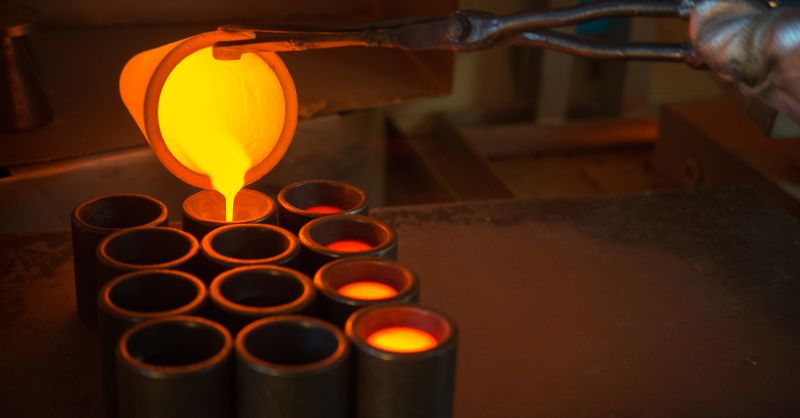Rising Demand for Minerals and Raw Materials Drives Metallurgy Market Growth

Minerals and raw materials are essential resources that play a crucial role in various industries, including metallurgy. As the global demand for industrial metal products continues to rise, the metallurgy market experiences significant growth, attracting both suppliers and manufacturers alike. In this article, we explore the reasons behind the increasing demand for minerals and raw materials, their impact on the metallurgy sector, and the resulting industry trends.
In recent years, the world has witnessed a surge in infrastructure projects, construction activities, and manufacturing endeavors. As a result, the demand for industrial metal products has been steadily rising. These metal products serve as the backbone for countless applications, ranging from construction materials to machinery components.
To meet this escalating demand, the metallurgy market heavily relies on a steady supply of minerals and raw materials. These resources are extracted from mines and undergo
Metallurgy supplies and metal fabrication supplies are crucial aspects of this industry. Metallurgy supplies include furnaces, crucibles, and other equipment used in the extraction and processing of metals. Meanwhile, metal fabrication supplies comprise tools and machinery essential for shaping and forming metal products.
One of the key factors driving the growth of the metallurgy market is the rapid expansion of the automotive and aerospace industries. Both sectors require high-quality metal components to ensure safety, durability, and efficiency. Additionally, the rising trend of electric vehicles (EVs) has further amplified the demand for metals like lithium, cobalt, and rare earth elements, crucial for EV batteries and electronics.
Furthermore, the energy sector also heavily relies on minerals and raw materials for the production of renewable energy technologies, such as solar panels and wind turbines. With the increasing focus on sustainable energy solutions, the demand for metals used in clean energy applications is also on the rise.
In recent years, the metallurgy market has experienced a shift in its sourcing strategies. Manufacturers are increasingly exploring new regions for mining operations to ensure a stable supply of minerals and raw materials. This trend is driven by the need to diversify sourcing locations and reduce dependency on a few key suppliers. Additionally, advancements in technology and mining practices have enabled the extraction of resources from previously inaccessible or challenging areas.
As the industry continues to evolve, various companies are exploring innovative recycling methods to minimize waste and maximize resource efficiency. Recycling scrap metals not only reduces the need for fresh extraction but also contributes to environmental sustainability.
The increasing focus on sustainable practices and environmentally friendly processes has led to the development of greener metallurgy solutions. These advancements aim to reduce the environmental impact of metal extraction and processing, making the industry more sustainable in the long run.
Moreover, governments and regulatory bodies worldwide are implementing stricter environmental regulations concerning the metallurgy sector. Compliance with these regulations has become a crucial factor for businesses operating in this industry, driving further investments in research and development of cleaner technologies.
The global demand for minerals and raw materials continues to rise, significantly impacting the growth of the metallurgy market. As industrial metal products play an essential role in various industries, suppliers and manufacturers are continually seeking innovative ways to meet this escalating demand. With a focus on sustainable practices, industry players are paving the way for a greener and more efficient metallurgy sector. As we move forward, it's essential for businesses to adapt to changing trends and invest in responsible sourcing and manufacturing processes, ensuring a sustainable future for the metallurgy industry.
